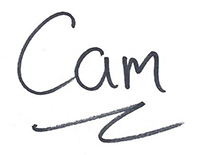Of course you’re looking for the best SF out there. You don’t want to read crap, after all. But there’s some very good reasons why using best-seller lists, “top author”, “Best of,” “most popular” and other similar listings of books is the worst way of finding the best stories to read.
The traffic stats on my blog also report on search terms people use to find me, and a good portion of those search terms show me that many readers are doing exactly this: searching for the “best of,” and best sellers, top authors, and other means of finding what they think will be the wheat amongst a lot of chaff and dreck out there.
If you try to find novels this way, you will miss out on a lot of great stories and authors.
Here’s why:
Best Seller lists are exclusive, not inclusive
There is no single best seller list anywhere that includes every SF novel ever written, across all time.
Even that most holy of holies, the New York Times (NYT) Best Seller List, doesn’t include indie published SF (which regularly outsells the #1 on their list each month). And up until just a few years ago, it didn’t include e-books.
The NYT list also cherry-picks which bookstore sales they will include when compiling their list. Anyone with a good idea of which stores they use can buy up a few thousand copies of their book and hit the list.
Amazon, which sells close to 99% of every SF ever published, has a best-seller list…but that list still only covers the books they sell, not every SF out there. And that best-seller list is skewed because of time — more on the time factor in a minute.
Any best-seller list you come across will only include titles for that publisher, review site, bookseller, or site. Whatever list you’re looking at will be limited in some way. It will exclude titles from its list. Therefore, it isn’t a true representation of “best”.
And then there is the time factor.
Best seller lists don’t factor in time
Most best-seller lists decide what is a best-seller based on some sort of limiting time period.
The NYT Best Seller List covers the previous month, for example. They will only look at sales across a one month period. Therefore a book that sells 20,000 copies in that one month period may end up being the #1 title for the month, even though it never sells another copy. Yet a book that sells 5,000 copies every month for a year, for a total of 60,000 copies in a single year, may never reach the top ten best-sellers list at all — yet it has outsold the #1 title three times over!
This distortion of what is really a best-seller is only going to get worse, because e-books stay on the virtual shelf forever, and keep selling month after month, after month, unlike the old paperback system where the book was on the bookstore shelf for a month and then was gone, already a distant memory, as the bookstore made room for new titles.
“Best-of” and “top” lists are subjective
Most “best of” and “top” listings are purely arbitrary. They’re pulled together based on one or two readers’ or editors’ opinions on who the best authors are, or what the top titles of the year are. Consulting these lists and using them as a buying guide means you are assuming that your reading tastes are the same as the one or two people who built the lists. This is extremely unlikely and you’re probably going to be disappointed by some or most of their selections.
Authors buy a place on the lists
The first author I heard who did this was Wayne Dyer, who bought copies of his first book in every major city on the eastern seaboard, back in the 1970s. Many, many authors have dropped a wad of cash and brought thousands of copies of their books to manipulate the lists.
There are now companies and organizations who will, for a price, do all the work for an author and guarantee them a place on the New York Times Best Seller list. They don’t even bother hiding the service — they advertise it.
Oh, and the Top 10 books on your supermarket shelf? Totally, one hundred percent, paid-for placements. The book in #1 paid more than the #3 book…and that’s the only difference between them.
Researched lists are still limited
If the lists were built using some type of statistics — highest review ratings, most reader votes, etc., you’re back to the same limiting factors that best-seller lists face: the lists can’t possibly include every SF ever written, and they are most certainly limited by some sort of time factor.
What lists ARE good for
Lists of any sort are pretty useless as a buying guide. But they’re not totally beyond redemption. They are, after all, lists. They’re a listing of SF titles. A limited listing, true, but you can scan the list to see if there are any titles or authors you’ve not heard of before, to add to your own personal list of titles and authors to research and check out before buying.
Just don’t let the fact that they’re on a best-seller or “best of” list influence your buying decision in any way. Their inclusion on that list is pure luck — the title happened to have sold just the right amount at the right time, or came to the right editor’s attention at the right time, to be included on that particular list, or the author or publisher paid to have the book placed there…and that is all.
When I have a moment or two, in the near future, I will build a how-to on how to find great books without relying on best seller lists.
What’s your favorite method for finding your next great read? Hit reply and tell me. I’ll add it to the how-to.

